
With the Google I/O 2014 keynote now wrapped up, it’s time to take a look at one of the core announcements: Android L (or, the 5th major-version release of Android). There’s an absolute tonne of information about Android L, including some 5000 (yes, five thousand) new API features available to developers, but we want to run over the high-level stuff which will be of most interested to end-users.
Perhaps the most interesting thing, before we jump into a bit of a run down, is that Nexus 5 and Nexus 7 (2013) devices will be able to run a preview release of Android L in the next couple of days to see what all the fuss is, and more importantly, for developers to get their hands on real-world devices running the new platform so they can get working!
Material Design
This was a bit of a buzzword throughout the keynote; as is any design language, Material Design is about unifying and bringing together, allowing apps to show off a more polished, refined aesthetic without having to reinvent the wheel. From small touches to shadows cast by apps and widgets, through to major changes to design language, Android L seems likely to be a major jump from Android KitKat.
The goal, if there is just one, behind Material Design is to make it easier still to design apps once to work across multiple platforms, using the same kind of thinking behind responsive web design. Grid (something that’s been used in CSS parlance as well) is coming to Android L, and will make this transition much easier.
New Features
There’s a few new features that we know about today, including changes to the way multitasking apps are viewed, to make it easier to swap between activities rather than just applications – for example, Chrome tabs will appear individually as recent tasks that you can flick between, allowing multi-tasking to reach inside the application for the first time.
Notifications have also received an overhaul, with notifications actionable from the lockscreen. The best way to describe this is something a bit more iOS-esque, but with a distinctly Android twist. You don’t just launch an app from a notification; you can reply to an SMS, respond to calendar invites, and more. There will also be a hierarchy of notifications, with a new ‘urgent’ notification feature to make sure that key messages are more likely to be seen.
Personal unlocking is also on the cards, which allows your otherwise PIN- or password- secured device to be unlocked in the presence of certain trusted devices. For example, you could designate a Bluetooth smartwatch or device as a trusted device, and when that device is paired, the lockscreen can be disabled. As soon as that device disappears from range, security is reimplemented seamlessly. It’s not just Bluetooth though; this could be WiFi and more.
Other smaller improvements include a changed Roboto font, enhancements to navigation keys, an obligatory keyboard update, quick settings changes and new animations.
Performance
What would a new Android version be if it wasn’t faster and more powerful than the last? We already know that ART (Android RunTime) is the default core in Android L, leaving Dalvik behind. Improvements on a range of measures show ART runs (on average) twice as fast as Dalvik, meaning fewer stutters in opening and running applications, and faster all-round performance.
Faster performance doesn’t just come from ART; Android is now natively 64-bit, which brings support for newer processors, increased RAM compatibility (i.e. more than 4GB), and greater cross-platform support. Because Android apps are written in Java (which is largely platform agnostic), there’s no change for developers to take advantage of the underlying 64-bit OS — it will just work, better and faster.
Of course, battery life is the logical loser to bigger and more powerful performance, and Android L will address this with Project Volta, much the same way Android Jelly Bean relied on Project Butter to improve (drastically) the user experience of Android 4. Volta will monitor in more detail what happens with your battery, what’s used it in the past, and will automatically make adjustments to extend your battery life.
In tests, Google was able to extend a Nexus 5’s battery life by 19 minutes — this might not sound like much, but considering battery drain with screen on and a phone in use can be quite quick, 19 minutes is quite a feat for a preview release of a new OS.
Last, and definitely not least, is the changes made for developers! Android L will feature 5000 new APIs which developers can hook into to make better apps for all of us. Here’s just a hint of all the new features:
Burst-mode camera APIs, H.265, NDK media APIs, TV input framework, Low latency audio recording, audio patch-panel, improved AV sync, USB audio, Cast-receiver hardware-assisted hot-word, ART, 64-bit trusted execution environment, Project Volta, improved battery stats, predicted time remaining, battery historian, Battery Saver mode, time to charge, time on lock screen, JobsScheduler, multi-network, Bluetooth 4.1, BLE central and peripheral modes, HFP 1.6 SAP, multi HFP, Map Email, OpenGL ES 3.1 and Android Extension Pack, Personal unlocking, enterprise, lock to app apis, Document-centric multi-tasking, Lockscreen notifications, heads-up notifications, do not disturb, New quick settings, phone rotation lock, Improved game controller support, Closed caption, colour inversion, colour space correction, improved text rendering, Material theme, activity transitions, view shadows, view elevation, RecycleView, CardView, path animations, and colour extractor.


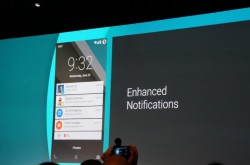

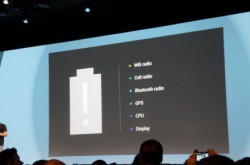
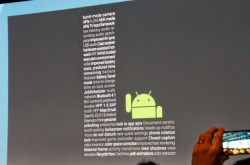
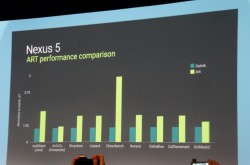
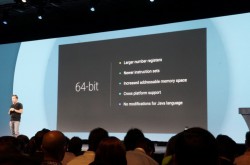



Sounds great to me.